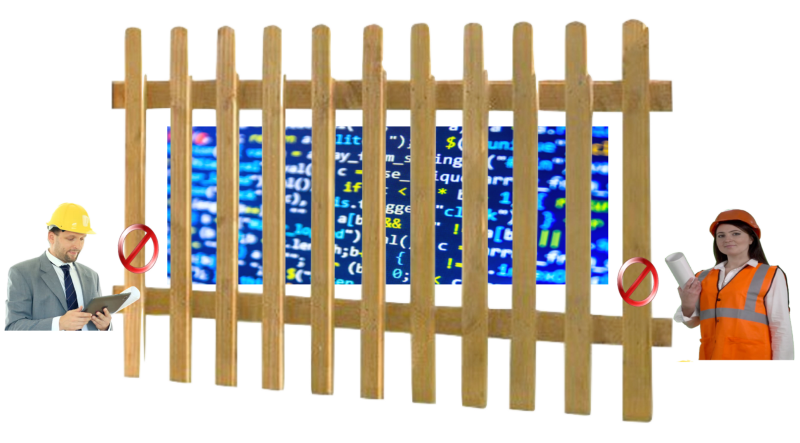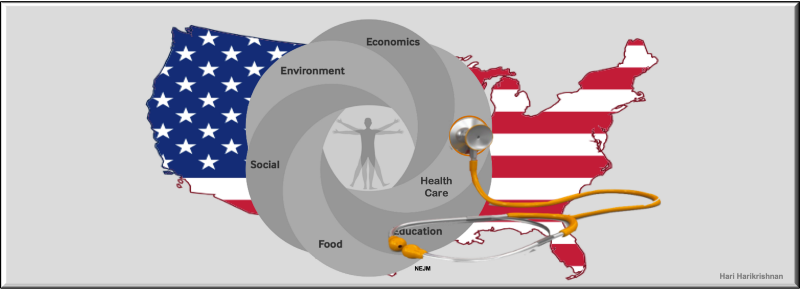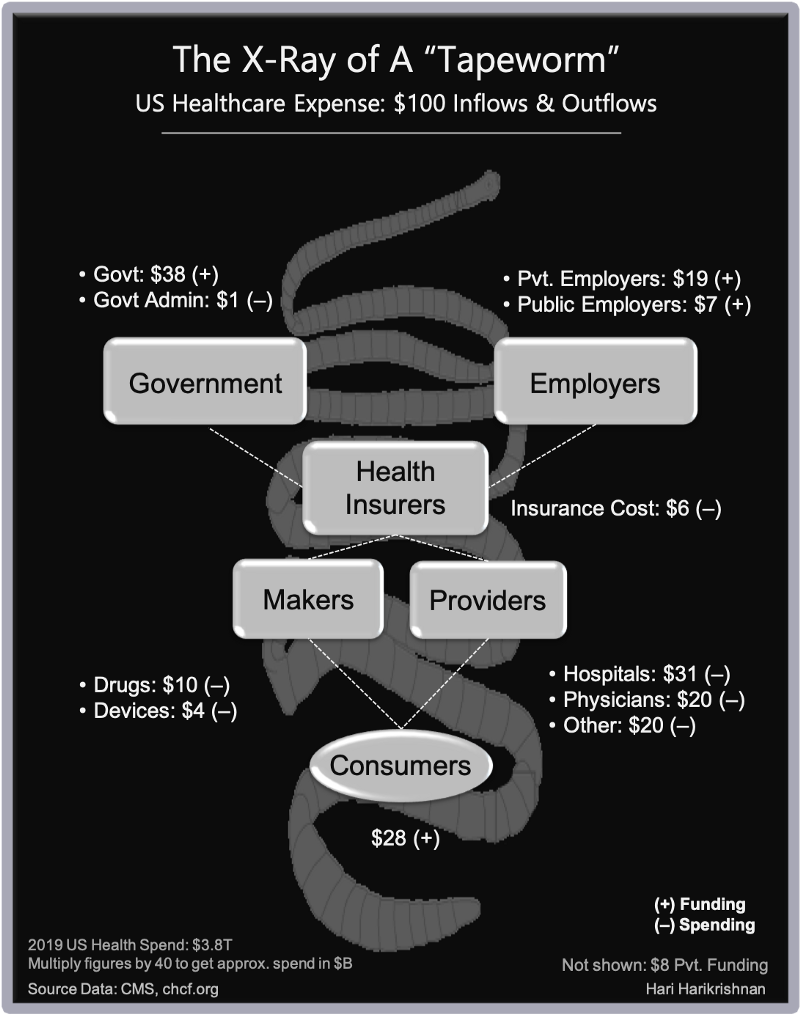Software may be eating the world. Yet, blindly wanting to be a software company could eat you up and chew you out if 3 fit questions are not addressed.
I listened while the speaker pounded their fists on the lectern and declared. “Walmart is a software company. Ford is a software company. GE is a software company.” On and on the list went on. After a few iterations, the audience got the message. Every company mentioned was greeted with a chorus of, “X is a software company”.
I was having visions by then of feeding the kids on software bought from Walmart — 5 licenses of low-fat milk please!
Let’s get real. Using software to improve your products or services does not make you a software company. So what will?
The Situation
How can systems or services businesses productize home-brewed software — software created to improve internal business operations or deliver services?
The situation looks like this for hardware equipment (OEMs / systems makers) or services firms:
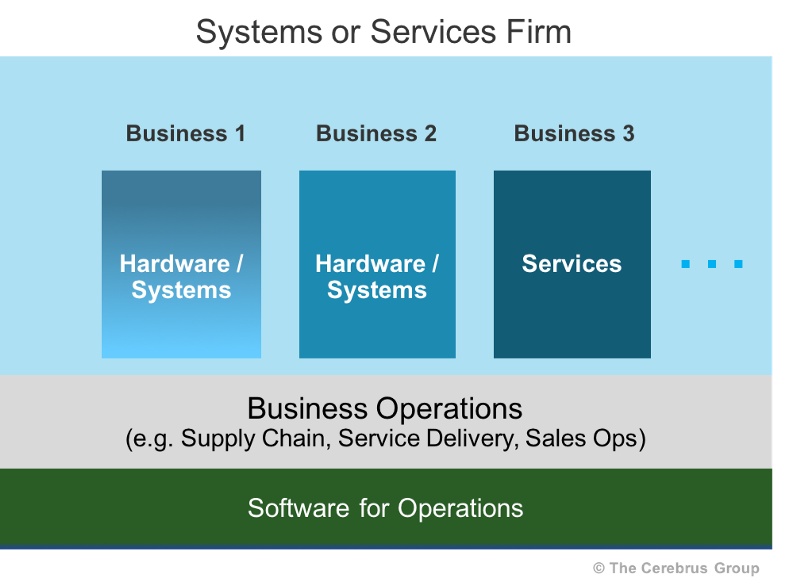
They have an existing portfolio of businesses in various domains. Business operations support those businesses. Often software is built or customized for their needs.
For such firms, answering the software productization question is not easy. Not just because of “skills-gap” or execution issues ranging from build-market-sell-adopt cycle of building and delivering software continuously.
Successful productization is down to 3 fit question — before we ramp up execution.
3 Fit Questions
In the startup world, product-market fit is the hard work that goes on in early startups to prove out a value proposition in the market.
In established firms, product-market fit alone is insufficient to determine successful scaling of a new business.
Introducing a new software product lines in these firms has consequences beyond simple product-market fit. The 3 fit questions to test your software productization aspirations are:
- Product-Portfolio Fit: How will the new product be positioned within the existing portfolio? Does it fit the overall company strategy?
- Product-Channel Fit: What is the channel to take this product to market? Existing or new?
- Product-Financials Fit: Are the financials similar to existing portfolio or is it different?
Let’s look at each fit question.
Product-Portfolio Fit
So you want to add a sizzling-hot swan to your portfolio of ducks. Perhaps it aligns with your mission to breed poultry that swim? Or of adding variety to your aquatic park?

Are you that industrial equipment company that muddled its way into selling some enterprise software? Or a services company that wants to sell software subscriptions, hoping to drive up its valuation?
Is software a means to improve your existing offering or is it a new product by itself? How does it benefit your customers and your investors if you became a software company?
In any case, be sure to place the new fowl side-by-side with the existing poultry to ensure its fit with your mission and product portfolio strategy. Or else, find yourself in deep waters after the initial excitement and multi-year investments.
Product-Channel Fit
Assuming you have built a swan, does it have a channel to swim to your customers? Are they existing or new? Can it reach the new buyers?

Do you have GTM (go-to-market) partners who can sell, deliver, and service your new product?
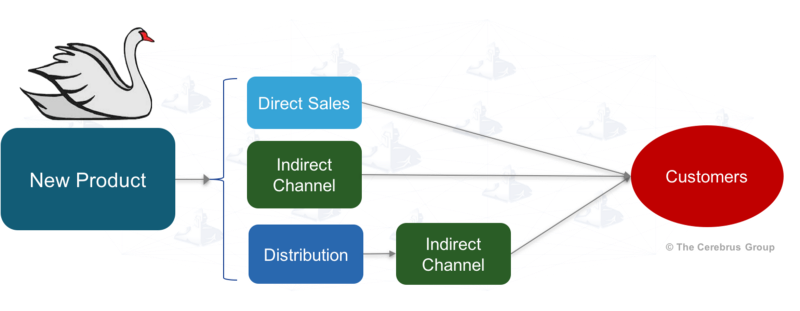
The example above shows the channel to reach the customer — the full complement of direct and indirect, tier-1 and tier-2 channel needed to scale your new offering.
Not mapping out a channel to get to new buyers for your swan will stunt your growth.
[More on this topic here: Rethink your GTM strategy for the Internet of Things]
Product-Financials Fit
Your current duck business is a cash-cow. But your new software business could see many dog years before it turns cashflow positive and profitable.
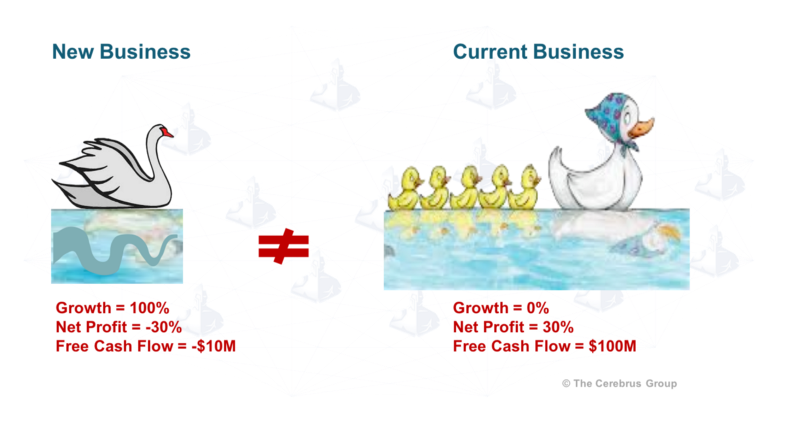
As seen from the illustrative financial metrics above, your duck and swan businesses could stand in sharp relief against each other when you look at your P&L and financial statements — after you account fully for the R&D and sales opex required to make the swan swim.
Note: You don’t need financial compatibility between the new and the old. In fact, you may never have compatibility. e.g. Amazon consumer vs. AWS. You do need to factor in the differences in the businesses and set expectations on growth and investment needed.
Not doing so will make our heads swim and your swan sink.
In Short
While exaggerating to make a point about the importance of software and declaring your company to be a software company, do not forget the distinction between using software to improve products vs. productizing software itself.
Test your software product for fit with portfolio, GTM, and financials, beyond product-market fit.
Aspects such as SaaS delivery, subscriptions sales and renewals, adoption, and customer success are important once we establish fit and move thoughtfully into execution.
A wise colleague once said, “just because you put up a website doesn’t make you an e-commerce company”. The same statement holds true for software, data, AI, blockchain, and any new hype. Just because you used those technologies in your products or services, doesn’t make you that company.
Before you jump into the software lake, align it with your overall portfolio strategy or your swan could turn into an ugly duckling really fast!

